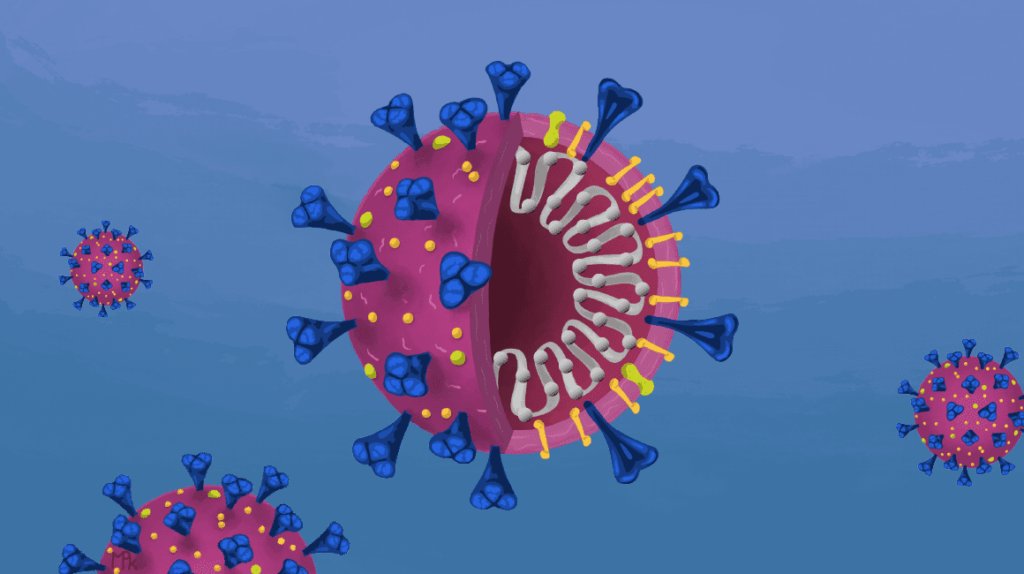There is a distinct difference between the cough sounds of infected individuals and healthy people. Furthermore, the cough associated with coronavirus (COVID-19) differs from those caused by other respiratory illnesses.
In this article, we will explore the unique characteristics of coronavirus cough sounds, debunk common myths, and present key facts to help you better understand this symptom.
Cough Sound of COVID-19 Patients
Scientific research has identified distinguishing features between the cough sounds of COVID-19 patients and healthy individuals by analyzing frequency, severity, and pattern of coughing.
Typically, a harder and more frequent cough may indicate worsening health conditions. These insights are crucial for healthcare providers worldwide, helping improve testing and monitoring processes.
However, it’s important to note that a cough alone does not definitively indicate a COVID-19 infection, as coughing is a symptom common to many respiratory illnesses.
How to Detect Cough Sounds?
Medical professionals are now leveraging advanced audio monitoring devices powered by specialized algorithms to detect and analyze cough sounds. This technology aids in early diagnosis and treatment by capturing subtle differences imperceptible to the human ear.
The Procedure of the Algorithm
In controlled studies, healthy participants were asked to cough to establish baseline cough sound profiles, while COVID-19 patients in isolation wards were continuously monitored for their coughs, breathing patterns, and respiratory effort.
Findings revealed that the coronavirus-related cough typically begins as a dry, tickling sensation in the throat and gradually becomes wetter with increased severity. Despite its intensity, the cough might initially resemble those caused by common colds or flu rather than distinguishing itself unmistakably as COVID-19.
Importance of Detecting Cough Sounds
This technology is especially beneficial for older adults and those maintaining social distancing, as it allows remote monitoring of respiratory symptoms such as coughing, sneezing, snoring, and breathing irregularities.
Since COVID-19 can be asymptomatic in many individuals—meaning they carry and transmit the virus without showing symptoms—accurate detection of subtle cough differences is vital to controlling disease spread.
Moreover, respiratory illnesses like pneumonia, asthma, and neurological conditions such as Alzheimer’s can affect respiratory performance and vocal cords. The algorithm can analyze non-verbal cough sounds to provide meaningful health insights beyond what the human ear can detect.
This low-cost and user-friendly tool has the potential to drastically improve pandemic management by identifying asymptomatic carriers and slowing viral transmission.
Facts About COVID-19 Cough Sounds
Key findings from recent studies include:
- Four main differentiators in coughs: vocal cord endurance, muscular degradation, emotional discomfort, and respiratory performance.
- The detection algorithm demonstrated an accuracy rate of 98.5% in identifying infected individuals and 94.2% accuracy in recognizing healthy people.
- It achieved 100% accuracy in detecting asymptomatic COVID-19 carriers and correctly identified 83.2% of non-infected individuals in this group.
These results indicate the tool’s strong potential for widespread use across diverse age groups and cultural backgrounds, though ongoing research is required before global deployment.
Researchers such as Cohen-McFarlane and her team continue to explore and refine this innovative approach.
For more detailed information, please read: Viruses and their effects on human life
Myths About COVID-19 Cough Sounds
Several myths about COVID-19 coughs have caused confusion and complacency, including:
- The false belief that COVID-19 is merely a flu-like illness affecting only older adults.
- The misconception that a vaccine is the only solution, ignoring the importance of preventive measures.
- Conspiracy theories suggesting COVID-19 was artificially created or that authorities are hiding vital information.
- The myth that dry coughs are the sole symptom of coronavirus infection.
- Assuming that COVID-19 coughs are always severe and rough, whereas they can vary significantly.
It’s crucial to recognize that asymptomatic carriers may show no symptoms yet still transmit the virus, emphasizing the need for accurate and proactive detection methods.
Final Word
Whether dealing with the flu, common cold, or COVID-19, the use of advanced cough detection algorithms represents a significant advancement in respiratory health monitoring.
Innovations like these can help reduce anxiety, improve early diagnosis, and potentially save lives. With further development, integrated tools on mobile devices could transform how the world manages respiratory illnesses and pandemics.
To learn more about The Role of a Holistic Medicine Specialist in Mental Health , please visit our Health category.
Frequently Asked Questions (FAQs)
1. Can a cough alone confirm a COVID-19 infection?
No, while the cough is a common symptom of COVID-19, it is not definitive by itself. Other symptoms and tests are necessary for an accurate diagnosis.
2. How does the algorithm detect differences in cough sounds?
The algorithm analyzes various acoustic features such as frequency, duration, and pattern of coughs to distinguish between healthy and infected individuals.
3. Is the cough of COVID-19 always dry?
Initially, COVID-19 coughs tend to be dry and tickling but can become wetter as the disease progresses.
4. Can asymptomatic individuals be detected through cough sound analysis?
Yes, the algorithm has shown high accuracy in identifying asymptomatic COVID-19 carriers by detecting subtle cough characteristics.
5. Is cough sound detection technology currently available for public use?
While promising, this technology is still undergoing research and validation before broad public deployment.


